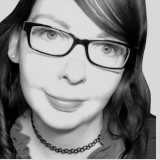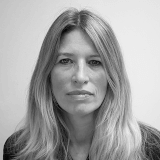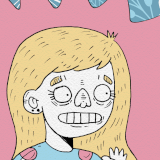
Anxiety may occur inside of your mind, but it often leads to a host of reactions that can cause anxiety to affect your face in a variety of ways. Facial symptoms aren't common with anxiety, but there are many issues that can affect the way the face feels and looks.
But before you worry about others judging you, most people cannot recognize anxiety when they see it. Often the symptoms are either invisible or too subtle to be seen by even the most trained eyes.
Can Anxiety Be Seen in Your Face?
In a general sense, it is possible that someone can tell when you're suffering from fear. A lack of responsiveness might give it away, for example.
But there are a few things you need to understand about anxiety:
- Most people have no ability to tell when someone is anxious.
- Most people don't care that you're anxious and won't think differently of you.
- Trying to hide your anxiety makes your anxiety worse and could cause worsened symptoms.
That latter point is especially important. People are often overly concerned about someone else being able to tell that they have anxiety. But in moments of extreme anxiety, trying to hide it all inside of your head may actually increase the severity of your anxiety symptoms. It's better to not concern yourself with what others think and do what you need to in order to calm your anxiety.
Facial Symptoms
There are several symptoms of anxiety that affect the face specifically. For example:
- Facial Tingling
A tingling, number, or burning face is symptom of anxiety that can cause a great deal of fear. That's because facial tingling is often linked to a disease that scares many people with anxiety: multiple sclerosis. MS can cause face tingling, which is why so many people that have a tingling face often experience severe anxiety as a result.
But MS is very rare, and anxiety - especially panic attacks - can cause a tingling face due to a variety of factors, including hyperventilation. The only way to tell the difference is to speak to a doctor, but rest assured that while a tingling face is an unusual anxiety symptom, it's not a rare one.
- Red Face
Anxiety can also cause your face to reddened. This is caused by dilation of the capillaries in the face. Red face/flushing is generally fairly temporary, though it can last for a few hours or more. A redder face is a visible symptom of anxiety, but not one generally associated with anxiety.
- Pupil Dilation
During anxiety attacks, the body activates the fight or flight system - a system designed to help you react quickly to fear. One of the mechanisms that is activated is the pupils, which dilate so that your eyes can get more light and respond more quickly. Unfortunately, since you're neither running away nor fighting, that pupil dilation serves very little purpose, and in some cases can cause eye pain or sensitivity to light.
- Lip Symptoms
Anxiety can affect the lips as well, though these are generally not visible symptoms and rarely cause much distress even in those that have anxiety. Anxiety can cause you to bite your lip, which may lead to bleeding. Furthermore, anxiety may also dry out the lips because of the breathing that may happen when you're anxious.
Overcoming the Facial Symptoms of Anxiety
Anxiety can affect the face in a variety of different ways. There is no specific strategy for overcoming face symptoms altogether. Slowing your breathing may help with facial tingling, and walking around can improve blood flow to reduce flushing, but overall each facial symptom is simply the result of your anxious state.
The most important thing to remember is not to worry about your facial symptoms with regard to those around you. Remember, the more you try to hide your anxiety and the more ashamed you are of it, the more anxiety you're going to experience. The vast majority of people will not notice when you're anxious, and if they do they'll want to help you, not judge you.
Summary:
Anxiety can cause a red face, tingling face, pupil dilation, dry lips, and more. The causes depend on each symptom. Sometimes, face symptoms create more anxiety. Treatment focused on anxiety, rather than face-related issues, is considered the best recommendation for reducing the frequency of these issues.












